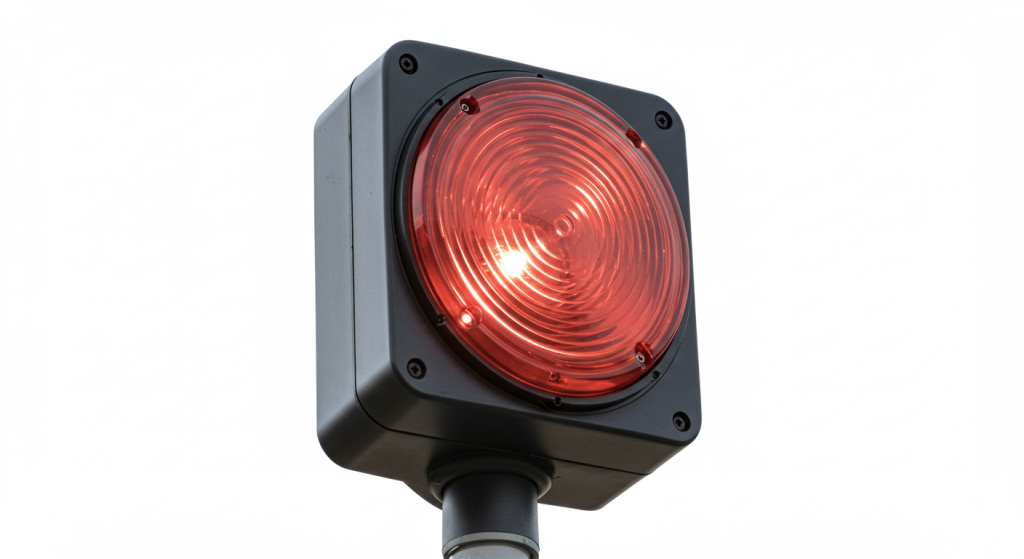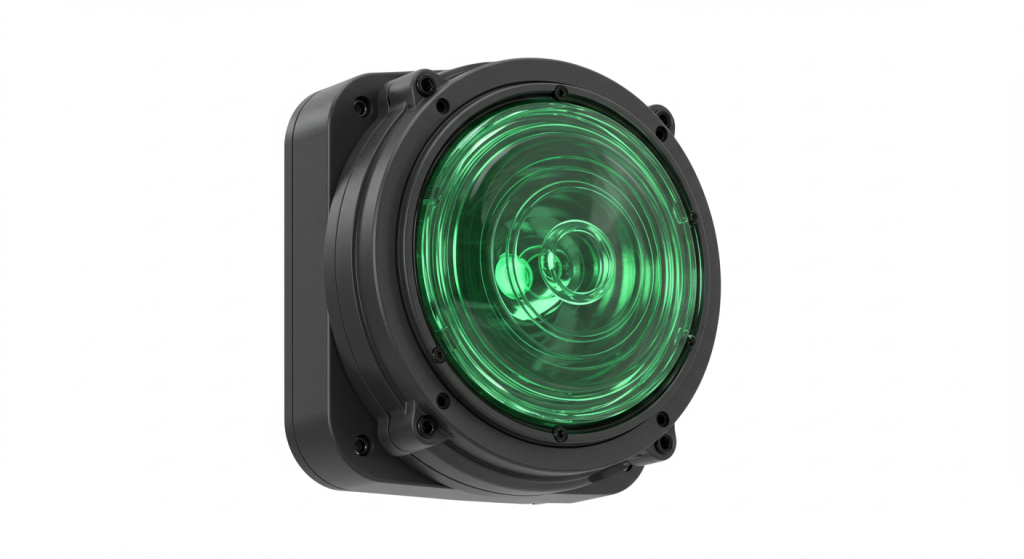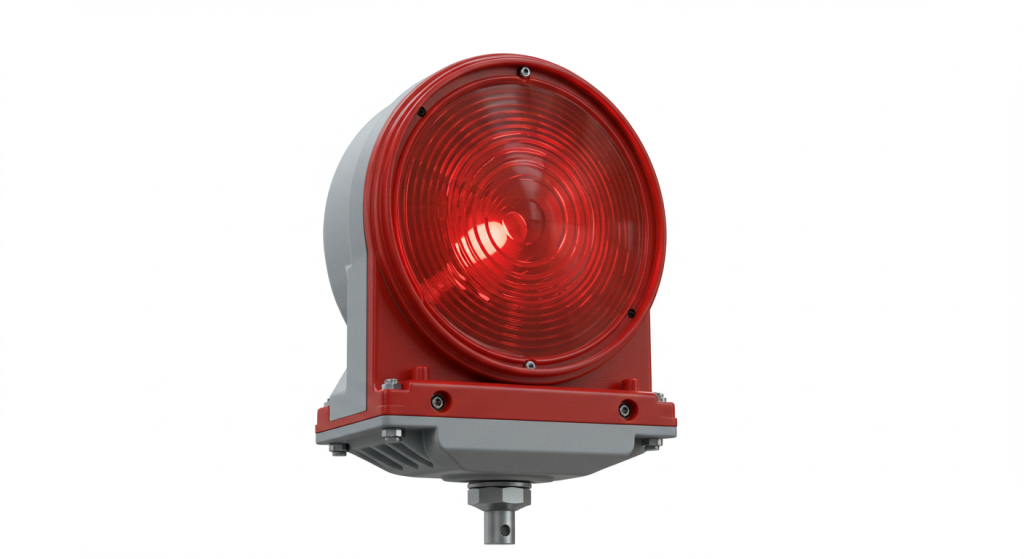Understanding the landscape of aviation lighting, especially when considering How to buy aviation lamp price, is crucial for both safety and regulatory compliance. The price of aviation lamps is not just about the initial investment; it involves considering long-term maintenance, energy consumption, and, most importantly, performance. Factors like luminosity, durability, and compliance with international standards such as ICAO are paramount. When selecting aviation lamps, one must think about essential attributes, including the Performance of solar signal lights such as: light intensity, reliability under varying weather, operational temperature ranges, lifespan of LED components, solar panel efficiency, battery life, and ease of installation. This initial evaluation lays the foundation for a cost-effective and safe aviation lighting solution.

The selection process is further refined when considering specific applications, be it for airfield ground lighting, aircraft warning, or obstruction lighting. Understanding the differences between these applications can greatly influence the ideal type of lamp. For instance, obstruction lighting, often mounted on towers or tall buildings, requires high intensity to be visible from a distance, especially at night or in adverse weather conditions. Conversely, airfield lighting needs to provide precise guidance for pilots during landing and takeoff. Key here is understanding How to Choose the Solar Signal Light, looking at features such as: selecting the right light color for the specific use, proper mounting methods to ensure stability, the right light intensity and beam spread, if automatic on/off operation is required, how robust the signal light will be against environmental factors, also check for appropriate certification, and understanding the product’s warranty.
What are the Standards for Aviation Lights?
Aviation lighting standards are meticulously defined to ensure the safety and efficiency of air travel. These standards dictate the type, intensity, color, and placement of lights across various applications, from airport runways to tall structures. Primarily, these standards are set by international bodies like the International Civil Aviation Organization (ICAO) and national aviation authorities like the Federal Aviation Administration (FAA) in the US.

ICAO Annex 14: A Cornerstone of Aviation Lighting Standards
The ICAO Annex 14 is the most significant reference point for aviation lighting standards. It specifies the requirements for aerodrome design and operations, covering various aspects of airfield lighting, including runway, taxiway, and approach lighting systems. It details specific photometric requirements, specifying the candela (intensity), light color, and beam characteristics needed for different situations. For instance, runway edge lights are required to be white, while taxiway center line lights are typically green. Similarly, approach lights require a sequence of flashing white lights to guide pilots toward the runway.
National Aviation Authority Standards
Beyond ICAO, national aviation authorities often establish additional standards specific to their airspace and operational needs. These standards might stipulate additional requirements or modify aspects of ICAO standards based on local conditions or infrastructure. For example, the FAA has its own set of regulations (e.g., FAA AC 150/5345 series) that complement ICAO standards, ensuring that US aerodromes meet the highest levels of safety. These regulations might cover specific mounting methods, testing protocols, or certification processes for aviation lighting systems. Hence, it’s essential to consult national standards alongside ICAO regulations when selecting aviation lamps.
What is the Standard for Obstruction Light?
Obstruction lights play a vital role in marking tall structures and obstacles that might pose a hazard to low-flying aircraft. These lights are designed to make structures visible, especially during nighttime or periods of low visibility. The standards for obstruction lighting dictate the intensity, color, and flash rates required to ensure visibility from a safe distance. Several critical specifications should be considered when choosing obstruction lighting systems.
Obstruction Light Types and Intensity Requirements
Obstruction lights are categorized into three primary types: low-intensity, medium-intensity, and high-intensity lights, each designed for different structure heights and visibility requirements. Low-intensity lights are typically used for shorter structures and operate at a steady red light. Medium-intensity lights use flashing red lights and might be required for taller structures or in areas with lower visibility. High-intensity lights are the most powerful, utilizing bright white lights that flash or alternate between white and red. The choice of light type depends on the height of the structure and its proximity to flight paths. The required intensity varies depending on the type, with high-intensity lights reaching thousands of candelas.

Color and Flashing Rate
The color of obstruction lights is primarily red or white. Red is most commonly used for night time and low-intensity applications, while white is preferred for high-intensity lights, especially during daytime or when marking structures near airports. The flashing rate is also important; these rates must be consistent across all lights on a structure to provide a clear and recognizable signal. The flash frequency can vary from 20 flashes per minute to over 60, depending on the specific standards and light intensity. Flashing lights improve the visibility of the obstruction, especially to pilots who must be able to quickly identify structures while approaching for landing.
Placement and Coverage
The placement of obstruction lights is just as important as the light’s intensity and color. Lights must be placed at the highest point of the structure to maximize visibility. For tall structures, intermediate lighting levels are often required to ensure that the structure’s entire height is marked. The pattern of light placement must be carefully considered to provide sufficient coverage, particularly on larger buildings and towers. In many cases, lighting needs to be installed on all sides of the structure to ensure visibility from all directions. The layout must adhere to specific guidelines to prevent pilots from experiencing a confusing or ambiguous visual signal. Correct placement ensures compliance with safety regulations.
What are ICAO Annex 14 Aircraft Warning Lights?
ICAO Annex 14 provides detailed standards for various aviation lighting applications, including obstruction lighting or aircraft warning lights. Aircraft warning lights are a crucial part of these standards, especially for structures that could potentially interfere with flight paths. The goal of ICAO Annex 14 aircraft warning lights is to improve safety by making all structures that pose a threat visible to pilots.
Categories of Aircraft Warning Lights Under ICAO Annex 14
Annex 14 categorizes aircraft warning lights into types based on height and operational context. Type A, B, and C low-intensity lights, Type A and B medium-intensity lights, and high-intensity lights make up the majority of these categories. Low-intensity lights are intended to mark relatively shorter structures and operate with a lower light intensity, whereas medium-intensity lights are for taller structures, and high-intensity lights are designed for the tallest structures, especially those in close proximity to airports. The type required will be determined by the height and location of the object needing to be illuminated.
Technical Specifications for Aircraft Warning Lights
ICAO Annex 14 specifies detailed technical requirements for aircraft warning lights, including the light’s intensity, color, light distribution pattern, and flash rate. The standards stipulate that the horizontal distribution of light must be nearly omnidirectional, with minimal variation in light intensity for angles across the horizon. The light’s vertical distribution is carefully designed to ensure that pilots can see the lights while approaching from above or below the level of the obstruction. Additionally, the standards describe precise requirements for the flashing rate to differentiate warning lights from other light sources. For low-intensity lights, red is most frequently used, while high-intensity lights use white, which may operate at different times to optimize visibility.
Installation and Maintenance
The installation and maintenance of aircraft warning lights must comply with the guidelines and requirements set out in Annex 14. The lighting systems have to be correctly installed at the right heights and in the correct pattern. Proper wiring, secure mounting, and consistent maintenance programs are essential to ensure that the lighting system remains reliable and functional. The standards also specify the need for regular testing and replacements to maintain effective illumination. Maintenance is critical to ensure the long-term efficacy of obstruction lighting systems, as even minor failures could result in safety hazards.
At What Height Do Buildings Need Aircraft Warning Lights?
One of the fundamental questions regarding aviation safety is determining at what height structures require obstruction lights. The requirements for when to install aircraft warning lights vary among international standards and national regulatory standards. While specific height thresholds may differ by country, there is a general consensus that any structure that could pose a hazard to aviation should be properly marked.
General Guidelines on Building Height Requiring Lights
Generally, structures that exceed a height of 200 feet (60 meters) above ground level are likely to require some form of aviation obstruction lighting. However, this is a loose parameter and many variations do occur within individual countries. Structures exceeding this threshold often require low-intensity or medium-intensity obstruction lighting, depending on factors such as their exact height and location in relation to flight paths. In some urban environments, where building density is high, even slightly shorter structures might require lights if they are in close proximity to airports or flight routes. Conversely, structures far removed from flight paths might be evaluated with less severe guidelines.
Factors Affecting Lighting Requirements
The height of the structure is only one of the parameters affecting the requirement for obstruction lighting. Other parameters, such as location, terrain, and the presence of nearby airports or helipads, also impact the decision. Structures near airports must have warning lights regardless of height, because flight paths are likely to descend to lower elevations and low-flying aircraft would be more likely to intersect with buildings. The characteristics of the surrounding terrain also affect the height limit; an individual structure located on top of a hill or mountain will have significantly more risk to air traffic than one located in a low valley. Lighting standards and requirements will vary based on an individual evaluation of each factor.
Specific Height Thresholds According to National Standards
While the global consensus leans towards around 200 feet (60 meters), national authorities often establish specific height thresholds based on their local airspace and conditions. For example, the FAA has its own set of rules based on geographic location, proximity to airports, and specific types of structures. It’s essential for construction planners to understand the standards that apply within their area to ensure compliance. Height thresholds may also vary based on local ordinances and planning requirements. In many jurisdictions, planning authorities may require a formal evaluation of buildings and structures before the installation of aircraft warning lights. These evaluation requirements help in determining appropriate placement and light intensity for each individual situation.
Factors Influencing Aviation Lamp Prices
The price of aviation lamps is not uniform; it’s influenced by multiple factors, including the lamp’s type, manufacturer reputation, technology used, and compliance with aviation standards. When considering “How to buy aviation lamp price,” it’s crucial to understand the interplay of these variables.
Type of Aviation Lamp
The price of aviation lamps varies significantly based on the type. Low-intensity, medium-intensity, and high-intensity obstruction lights are priced very differently. Low-intensity lights, often used for shorter structures, tend to be more affordable due to their simpler design and lower light output. Medium-intensity lights, which require a higher light output and flashing capability, come at a higher cost. High-intensity lights, which are designed for taller structures and require a very intense beam of light, are the most expensive. Also, airfield lighting such as runway and taxiway lights have different requirements from obstruction lights, impacting their cost. These different specifications are key in pricing differences.
Manufacturing Standards and Technology
Lamps from established manufacturers known for quality and reliability typically command a premium. These manufacturers adhere to stringent testing and certification processes to ensure that their products meet aviation safety standards and guidelines. These manufacturing standards impact the cost of materials and the precision of component assembly. In addition, the technology used in the aviation lamp greatly affects its price. LED lamps are typically more expensive than traditional halogen lamps due to their energy efficiency, longer life, and lower maintenance requirements. However, these lamps, despite their higher initial cost, offer long-term cost savings through reduced energy consumption and decreased need for frequent replacements. The selection of more advanced materials and advanced integrated circuits also affects the cost of the light itself.
Compliance and Certification
Aviation lamps must meet specific international and national standards, such as ICAO and FAA regulations. The certification process to demonstrate compliance to these specifications contributes to the overall cost. Lamps that have gone through rigorous testing and verification to meet these standards are typically more expensive than those that have not. The testing processes often require extensive documentation, which adds to the cost. The compliance process also helps to guarantee the lights’ quality and performance. In addition, the certifications ensure that these lamps can be reliably used for their intended purpose, minimizing liability and risk.
Longevity, Maintenance, and Warranty
The long-term cost of aviation lamps is heavily influenced by their expected lifespan, maintenance requirements, and the manufacturer’s warranty. Lamps with longer lifespans and lower maintenance needs tend to have a higher initial cost but offer significant savings over time due to decreased replacement and upkeep. The warranty, provided by the manufacturer, protects the buyer against manufacturing defects or premature failure. A more comprehensive warranty may mean a slightly higher initial cost, but it provides protection in the long run. By evaluating the expected performance, maintenance needs, and warranty details, buyers can make an informed decision.
Finding Reputable Suppliers
When sourcing aviation lamps, selecting a reputable supplier is just as critical as choosing the right type of lamp. The reputation of the supplier often correlates with the quality of their products and their reliability to meet specifications. Several key factors should be considered when choosing a reputable supplier.
Certifications and Compliance
Reputable suppliers are able to show certifications that confirm their adherence to aviation industry standards. They should be able to demonstrate their compliance with ICAO Annex 14 and relevant national regulatory bodies like the FAA. The supplier’s ability to provide compliance documentation is an indicator of reliability and can give a buyer more confidence that the purchased product will meet regulatory requirements. These certifications are typically provided by accredited third-party testing organizations. They confirm that the suppliers are able to follow aviation industry best practices and can reliably deliver quality products.
Experience and Reputation
A supplier’s experience and reputation in the aviation industry is an important consideration. Suppliers that have many years of supplying the industry and have many different clients typically demonstrate their reliability and competence. Reputation can be found through client reviews, testimonials, and their list of projects and companies they have completed. Additionally, a supplier with many years of experience is generally more likely to have a deeper understanding of aviation lighting needs. Experience often directly correlates with a higher quality product, more reliability, and better post-sales support.
Product Range and Customization
A comprehensive product range is an indication that the supplier can cater to various lighting requirements. The range should include various types of obstruction lights and airfield lighting solutions. A supplier with a wide product range can better meet the unique needs of many different kinds of projects and facilities. In addition, a supplier that is willing to customize products can better fit their products to the unique needs of the project. Customization is usually required in special scenarios or specific project requirements. It allows for more project flexibility and ensures that the solutions delivered are tailor made to individual specific needs.
Customer Support and Technical Assistance
Reliable customer support and technical assistance are critical when it comes to the installation, maintenance, and performance of aviation lights. A supplier that provides a dedicated team to address questions and concerns is highly beneficial. They should be able to offer help with installation, maintenance recommendations, and troubleshooting. A responsible supplier will work hard to ensure the customer’s satisfaction and the longevity of their products. Responsive customer support reduces delays and improves the safety of air travel.
Conclusion
In summary, understanding How to buy aviation lamp price requires considering a wide array of aspects beyond just the sticker price. Factors like compliance with standards (ICAO Annex 14), the type of lamp required, manufacturer reputation, technology used, and the long-term costs of maintenance and replacement all play significant roles. Whether dealing with obstruction lighting or airfield lighting, the selection process involves looking at technical specifications, regulations, and the reputation of the supplier. By taking a comprehensive approach and making informed decisions, buyers can ensure that their investment in aviation lighting not only meets the safety and regulatory requirements, but also provides a safe and efficient environment for air travel. The evaluation of elements such as light intensity, beam spread, color, and reliability are crucial to optimize safety and effectiveness. The investment in aviation lamps can ultimately improve safety, reduce risks, and increase the long-term viability of operations.
The careful analysis and evaluation of these crucial factors ensures the purchase of the best lighting solution, tailored to the specific needs of the project. It’s essential to take your time, research, and seek out suppliers who demonstrate an understanding of the complex requirements of aviation lighting. Taking a proactive approach ensures the overall integrity of the lighting systems and its ability to perform reliably within its intended context.
The investment in high-quality, standard-compliant aviation lighting is fundamental for aviation safety. By choosing the right products, and working with reliable suppliers, everyone involved can ensure that their lighting solution provides a safe and reliable operation.
Understanding these concepts is essential for anyone involved in the purchase and selection of aviation lighting, and will ensure a safe and efficient aviation environment.
| Key Considerations | Details |
|---|---|
| Compliance | Meeting ICAO Annex 14, FAA, and other relevant standards. |
| Lamp Type | Low, medium, or high-intensity obstruction lights; airfield lighting. |
| Technology | LED vs. Halogen; energy efficiency, longevity. |
| Supplier Reputation | Certifications, customer reviews, industry experience. |
| Long-term cost | Maintenance, replacement, warranty. |
| Height requirements | Determined by regulations, geographic location, structure type. |